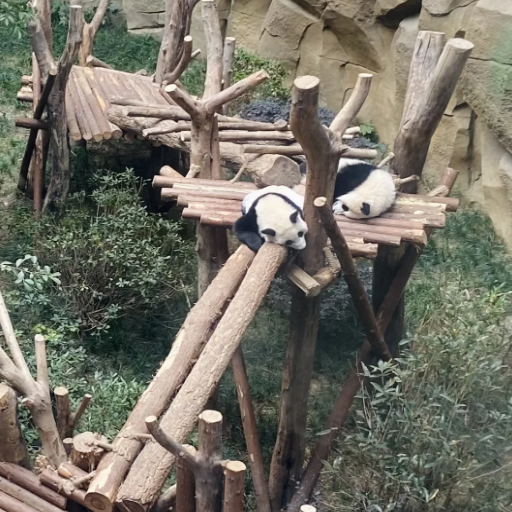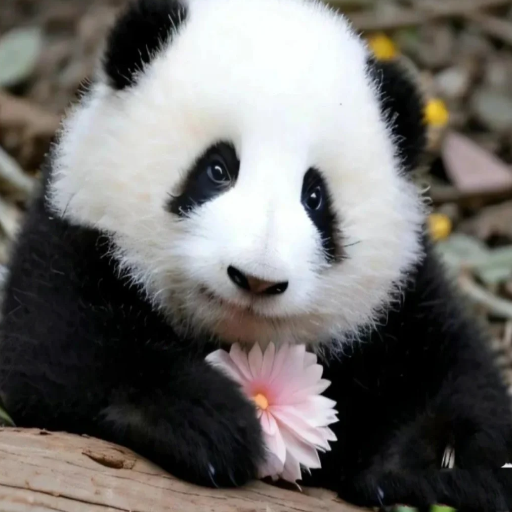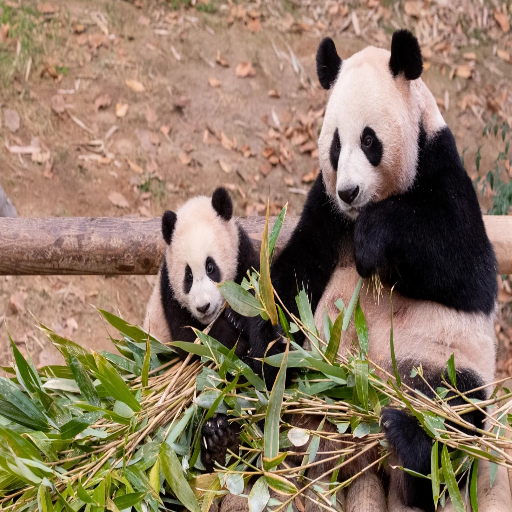Hello there, and welcome to Chengdu, the world’s capital for pandas! This guide aims to provide you with the best competitive journey about pandas’ seizures, including their conservation. Chengdu is famous for its panda research and breeding centers, which offer once-in-a-lifetime chances to interact with these cute beasts. This guide teaches everything from their distinctive habits and habitats to the significant panda conservation efforts.
What Makes the Chengdu Panda Base a Must-Visit?

What Makes the Chengdu Panda Base a Must-Visit
Because of its unparalleled commitment to preserving and protecting giant pandas, the Chengdu Panda Base is one of the most popular places to visit. Visitors can see pandas in their almost natural habitat, learn about their breeding and care processes, and participate in educational shows showcasing efforts to protect this endangered species. The base combines significant conservation activities with unforgettable experiences, making it a top attraction for wildlife lovers around the globe.
The Role of the Research Base of Giant Panda
Through its multidimensional programs, the Giant Panda Research Base is equally important in conserving and restoring this endangered species. The base is a center of scientific activity for panda breeding, disease control, habitat restoration, and behavioral research. Applying modern methods like genetic diversity assessment and artificial insemination ensures the sustainability of the captive panda population while providing the world with a genetic resource.
Maintaining a panda habitat requires a temperature of 15 to 24 degrees Celsius and a high bamboo diet with supplements. The Research Base aids fieldwork research by enhancing more than 1600 km of panda-friendly areas in the wild. Through these combined efforts, the Research Base protects the species and educates the public on the importance of conservation.
Unique Features of the Panda Enclosure
The enclosure’s thoughtful designs ensure the pandas’ comfort while maintaining their natural habitat. One standout feature is the peaceful climate-controlled environment, which averages 60-77 degrees Fahrenheit. This environment replicates the temperate forests in which pandas reside, helping them regulate their body temperature and experience seasonal changes in the wild.
Enjoyable landscaping is a highly recommended additional feature of the enclosure. It can include areas such as live bamboo groves, shaded places, climbing structures, etc., allowing the pandas to forage, showcase their climbing, and take refreshing rests. Each panda can fully enjoy the allocated space of 215-500 square meters while experiencing solitude.
The waste management systems are advanced enough to maintain cleanliness, while glass viewing panels with anti-reflective coating enable visitors to view the pandas without any animal stress. Moreover, the pandas are encouraged to engage in their natural behaviors, and welfare is enhanced through enrichment devices like puzzle feeders, rolling balls, and mentally challenging toys.
The enclosure also utilizes sustainable practices through efficient water filtration systems and green building materials, emphasizing the need for conservation in direct animal care and environmental design. Such attention to detail positions the panda enclosure as an outstanding example of novel, environmentally friendly animal care.
Exploring the Chengdu Panda Breeding Center
I had a fantastic time visiting the Chengdu Panda Breeding Center. The center conserves pandas through breeding, research, and education. The facility covers an area of approximately 247 acres, providing ample space for the pandas to roam and habitats intended to ensure their comfort. The center has more than 100 giant pandas, allowing the public to observe their daily routines, including feeding and playing with them.
I was fascinated to learn how the center incubates panda cubs because, as previously mentioned, pandas naturally give birth to very few cubs. For example, the breeding program’s artificial insemination strategies require constant observation of newborns and monitoring after birth. Furthermore, the center has dietary restrictions, such as that pandas must eat fresh bamboo, which weighs approximately 26-84 pounds, and other supportive, healthy foods to be in their best condition.
My trip showcased the work necessary to conserve an endangered species and stressed one crucial aspect: the balance of human life and wildlife. This must be the most exciting place for people interested in animal conservation.
How Can You See Pandas in Chengdu?

How Can You See Pandas in Chengdu
To see pandas in Chengdu, you can head to Chengu’s Research Panda Breeding Center, which is just a drive from the city. This center is open to the public, allowing visitors to see pandas in a more naturalistic setting. It is better to visit when pandas are active and feeding in the morning. In addition, guided tours are available discussing conservation efforts and the facility’s role in protecting pandas as an endangered species.
Planning a Chengdu Panda Tour
While planning your Chengdu panda tour, you should keep the following details in mind:
- Best Time to Visit
- Pandas tend to be more active in the morning when fed, generally between 8:30 and 10:30 AM. For the best experience, try to get an early start to the day.
- Tickets and Admission
- The gateline fee to the Research Base is around ¥58, and it can be purchased online to avoid long queues.
- Guided Tours
- Select the guided tour option to learn about panda behavior, conservation activity, and the research done at the facility in more detail. These tours usually cost extra, ranging from ¥150 to ¥200 based on the tour type and length.
- Transportation
- The base is located about 10 kilometers north of Chengdu,, which is very accessible. You can take a taxi (around ¥40 to ¥60 one-way), order through applications, or take public buses like Bus Nos. 87 and 198.
- Duration of Visit
- You should spend 2-3 hours appreciating the exhibits, bear watching, and the beautiful garden around the facility.
- What to Bring
- Comfortable walking shoes, sunglasses, a hat, water, and sunscreen are essential for warmer months. If you love photography, remember your camera and follow the rules of flash photography.
With these tips, your Chengdu panda tour will be smooth and insightful.
Visiting the Dujiangyan Panda Base
Around 60 kilometers from Chengdu lies the Dujiangyan Panda Base, a world-famous panda cub breeding center and China’s first specialized panda hospital. Known formally as the China Conservation and Research Center for the Giant Panda Dujiangyan Base, it specializes in panda rescue, rehabilitation, and disease prevention. It occupies more than 126 acres of cultivable land and is richly endowed with soothing green vegetation, ideal for pandas.
Key Activities for Visitors
- Panda Volunteer Program
Under proper supervision, the base’s visitors can participate in a unique one-day volunteer program that allows them to interact “hands-on” with the pandas by cleaning the enclosure, preparing their diets of bamboo, carrots, and specialized panda cakes, and feeding them through specially designed windows. Such programs enhance one’s understanding and appreciation for conservation needs and efforts.
- Panda Observation
The base has many viewing areas for adults and baby pandas so that all visitors can appreciate their cuteness and beloved bears at close range. I appreciate pandas’ actions as you observe their playful behavior and see some of them napping. The facility is constructed to imitate a wild-like setting for charge pandas for their welfare.
- Educational Exhibits
The indoor exhibits detail information about panda biology, conservation research, and the environmental issues these emblematic animals encounter. Genetic research and disease treatment are some areas in which the center claims to be a pioneer.
Important Information for Your Visit
- Opening Hours: Daily from 8:30 AM to 5:30 PM.
- Admission Fee:
- General entrance ticket: Approximately ¥58 ($8)
- Volunteer program fee (optional): Around ¥700 ($95), which includes a commemorative certificate and a uniform.
- Best Visit Time: In the morning, when the pandas are active, and during meals.
Tips for a Great Experience
- Due to limited availability, the volunteer program must be booked through the official website or authorized tour agents.
- Plan to walk on the scenic, green walkways—wear good walking shoes.
- For those who prefer less physical activity, the center offers green shuttle buses around the large area within the facility.
Visiting the Dujiangyan Panda Base will allow you to see the caring and majestic pandas under expert management and help preserve them for years.
Best Times to See the Pandas
The optimal time to visit the Dujiangyan Panda Base is between 8:30 AM and 10:30 AM. You can witness pandas feeding, playing, and exploring their enclosures, which is their most active period. The rest of the day, they spend most of their time resting and napping, making these two hours the best time to experience interacting fully with the pandas. Since you are planning your visit, I suggest traveling in March to May or September to November. The temperatures during those times are mild and pleasant and can significantly enhance your overall experience.
What is the Process of Panda Breeding in Chengdu?

What is the Process of Panda Breeding in Chengdu
Between 8:30 AM and 10:30 AM is the perfect time to visit the Duijangyan Pandas Base. During this time, you can see the pandas eating, playing, and exploring, their most active time of day. The rest of their day consists of resting and napping, making these two hours the best time to fully enjoy the experience with pandas. While you are planning your trip, I would recommend coming between March and May or September and November. The temperatures during those times are moderate and comfortable, which can significantly improve your experience.
The Chengdu Research Base of Giant Panda Breeding
The Chengdu Research Base of Giant Panda Breeding is one of the most advanced centers for research and education on the conservation of giant pandas. By implementing the newest technologies and scientific methods, they accomplish incredible things regarding the care and breeding of giant pandas.
Frequently Asked Questions:
- How does the base support breeding efforts?
- The base breeds using natural mating and artificial insemination. If natural breeding fails, artificial insemination is used to increase genetic variability.
- Panda females have an estrous cycle of 2-3 days, so breeding attempts must be timed accurately.
- How are panda pregnancies monitored?
- Ultrasound technology and Hormone scrutiny are utilized alongside behavioral monitoring to maintain the health and advancement of the fetus.
- What post-birth care is provided to panda cubs?
- As the panda cubs grow, their diet changes from milk to bamboo and is monitored around the clock. Panda cubs are also raised in a controlled environment with temperatures around 77°F or 25°C.
- What are the survival rates of panda cubs in captivity?
- Due to the specialized care given in captivity, survival rates exceed 90%, compared to much lower rates in the wild due to harsher environmental factors.
The Chengdu Research Base balances panda care and public education, showcasing a powerful concept management strategy for conserving the species.
Understanding Panda Breeding Research
Research on panda breeding is an area of specialization needed to improve the numbers of endangered species. Breeding pandas, either in the wild or in captivity, presents significant problems due to their low reproduction rates coupled with peculiar reproductive behavior challenges pandas present. The female panda has a reproductive period of 24 to 72 hours every year. Therefore, mating or artificial insemination must occur at the precisely right time.
Aspects of Panda Breeding
- Reproductive Cycle:
- After mating, female pandas ovulate once a year, and fertile days last 1 to 3 days. Monitoring hormones is very helpful in estimating when ovulation may occur, and it involves evaluating urine and blood for estrogen and progesterone content.
- Artificial Insemination:
- If natural mating does not succeed, this method of breeding is used. It is performed under anesthesia, and success rates of 50 to 60 % are noted in the captivity setting.
- Temperature and Habitat Conditions:
- The ideal enclosures should maintain a temperature range of 20 – 25 °C (68 – 77 °F) and a constant relative humidity that simulates the natural bamboo forest environment.
- Gestation Period and Birth:
- Due to delayed implantation, gestation will occur within approximately 95 to 160 days. In the first few weeks, panda cubs require much care as they are relatively small and very light, only 3.5 – 5.3 ounces PSD, and cannot care for themselves.
- Breeding Statistics:
- Due to the modern technology and techniques available at breeding centers such as the Chengdu Research Base, the cub survival rate within the first year exceeds 90%.
Challenges in Panda Breeding
Other obstacles include a lack of genetic variation, an overreliance on anthropogenic assistance, and obstacles to pandas’ post-captive breeding in situ phase. Work is being done to improve methods to make breeding more effective for the long-term sustainability of the species.
Life Cycle of Baby Pandas
Like all animals, the first phase in the life cycle of baby pandas is the birth phase, which is characterized by being very small, blind, and entirely relying on their mothers. In the initial days, the cub rests in the den, fed regularly while expanding its body and gaining power. The cub can fully open its eyes at 3 months and can crawl. When the cub reaches 6 months, it starts to forage outside the den and starts developing a slight liking for bamboo, although the cub still heavily depends on nursing from the mother. A panda cub is around 70-100 pounds when they are 1 year old and fully begins eating bamboo without needing milk. The raiding for independence of a panda typically starts at 1.5 years but can go up to 2 years, meaning they can self-manage in the wild or controlled systems.
- Newborn Weight: 3.5 to 5.3 ounces (100 to 150 grams).
- Diet Transition Period: Significant at around 6 months to 1 year (milk to bamboo).
- Weaning Period: Around 8-9 months, completed by 12 months.
- Juvenile Independence Age: 18-24 months.
These stages illustrate the delicate nature of panda cub development. To ensure appropriate development, the cub significantly needs maternal assistance, care, and close human observation.
Why is Panda Conservation Important?

Why is Panda Conservation Important
Panda conservation is essential for a variety of reasons. First, as an umbrella species, their protection allows other animals and flora within the same region to thrive alongside them. Moreover, pandas aid vegetation growth through seed dispersal, making them a critical ecosystem component. In addition, preserving pandas helps sustain the existing genetic diversity and ensures that this iconic species is alive for many generations. Last but not least, panda conservation promotes the protection of the environment and the attention that endangered species need direly and increases collective consciousness for panda conservation on a global level.
Contributions of the Panda Breeding Research Base
The Panda Breeding Research Base has contributed to the conservation and protection of pandas in many ways. One significant achievement is the augmentation in the reproductive rates of the pandas, which has been made possible through ingenious breeding programs that incorporate artificial insemination and optimal genetic pairing. Recent efforts have created a consistent population of captive pandas with genetic diversity above 90%, thus mitigating the risks of inbreeding.
Moreover, the research base has formulated targeted nutrition programs to protect the pandas’ health, including sustainability studies on bamboo to ensure the food will always be available. They have also expanded their medical research to improve veterinary care for pandas by treating specific diseases to increase survival in captivity and the wild.
The base also provides pandas bred in captivity with thorough training and monitoring before their release into the wild for reintroduction programs. These programs have been shown to increase the wild pandas’ population, with a post-release survival rate greater than 75 percent. In addition, the center helps raise public awareness of these issues. It assists in international campaigns as a form of education, relying on the initiative’s exhibitions, research papers, and sponsorships with foreign conservation groups, stressing the importance of biodiversity protection.
The Impact of Giant Panda Breeding Centers
Breeding centers of giant pandas have become one of the most critical measures for sustaining the species’ existence. As I have read, those centers are aimed primarily at demographic, ecological, and technological activities. They help augment panda populations through controlled breeding programs emphasizing genetic variability to reduce the chances of inbreeding depression. For instance, centers attempt to improve reproduction rates through artificial insemination. Key aspects include monitoring hormone levels, with estradiol and progesterone assessments used to predict optimal breeding windows.
Moreover, these centers support habitat conservation through reintroduction efforts, in which pandas are taught to survive in the wild. Monitoring movement range, diet adaptation, and awareness of potential predators are critical to this process to guarantee that released pandas will be able to survive. In the end, breeding centers use resources such as satellite tracking and genetic databases to aid in documentation and enhance comprehension of panda biology, which, in turn, helps them contribute to wildlife conservation internationally. This effort demonstrates these centers’ immense impact on pandas and the goals of biodiversity as a whole.
What Can You Expect from Panda Tours in Chengdu?

What Can You Expect from Panda Tours in Chengdu
Whatever panda tour you pick, rest assured that your trip to Chengdu will be unique and unforgettable. Most tours include visits to famous panda research centers, some even allowing close encounters with the animal or volunteering programs where participants can help prepare food and clean panda enclosures. Combine this with the rich historical context that guided tours offer, and visitors will see how pandas are more than just a national treasure; they are a symbol of heritage. For many, the highlight comes from observing the achievements in panda conservation, from playful cubs to adult pandas.
Overview of Chengdu Panda Tours
At Chengdu Panda Tours, the focus is on education and conservation while immersing the visitor. An example experience includes:
- Visits to Panda Research Centers
- These include the Chengdu Research Base of Giant Panda Breeding and the Dujiangyan Panda Base.
- Visitors can observe pandas in semi-natural habitats, observe active behavioral patterns, and learn about various breeding programs.
- Volunteering Opportunities
- Participant tasks include preparing specialized bamboo diets, cleaning enclosures, and assisting with the pandas’ daily care.
- To ensure safety, participation requires a commonly set minimum age of 12 and a basic level of physical fitness.
- Educational Experiences
- Gain insights into the conservation efforts for pandas in areas like breeding, habitat protection, and reintroduction.
- Professional guides are available to explain the cultural importance of pandas in China.
- Details
- The average tour length is three to five hours for general visits and a full day for volunteering programs.
- Group sizes are usually capped at 10-20 people to improve the experience and reduce animal stress.
- Panda research centers are usually open from 8 am to 5 PM, so early visits are good for seeing pandas when they are most active.
Chengdu Panda Tours aims to foster a love for wildlife, provide more excellent knowledge on conservation issues, and help you create wonderful memories with these iconic animals of the world.
Highlights of the Panda Avenue
Panda Avenue takes visitors of all ages through the fantastic world of giant pandas, offering experiences and activities aimed at their enjoyment. Consider the experience below:
- Panda Habitat Exploration
- Visit the life-like natural habitats of pandas with their bamboo gardens, simulating the Sichuan bamboo forests.
- Watch pandas as they eat over twenty varieties of bamboo grown on the premises and play in the trees.
- Understanding the climate and vegetation is vital to preserving these endangered species’ existence.
- Interactive Educational Stations
- Help yourself with interactive kiosks containing information on panda physiology and behavior.
- Gain knowledge about pandas through quizzes, videos, and AR interactions.
- The kiosks have adult and children sections to promote fun, active learning.
- Feeding Sessions and Close Encounters
- See professional caretakers feeding the pandas at specific times, usually at 9 AM and 2 PM.
- There are limited chances to pre-book opportunities where you can feed the pandas while under staff supervision.
- Conservation Activities
- Participate in volunteer programs like enclosing cleanings, preparing panda meals, and bamboo planting.
- These programs are generally offered to children 12 and older and must be booked one week in advance.
- Aspects for Visits
- Visiting Hours are 8 AM to 5 PM, with the last entry at 4 PM. The best time to see the pandas active is in the morning, from 8 AM to 10 AM.
- Duration: Guided tours with educational stops are about 4 – 5 hours, and self-guided tours are approximately 2-3 hours.
- Group Size Limit: All visits are limited to 20 people for a more personal and uninterrupted experience.
- Accessibility: All areas have accessible paths and baby-friendly features, making everyone comfortable.
Panda Avenue provides its visitors with an unforgettable experience, ranging from educating and conserving these animals to intimate views. It also teaches visitors to take better care of themselves and their natural habitats.
Experiencing Pandas in Chengdu
The highlight of my trip to Chengdu was undoubtedly visiting the pandas. It was a special moment made better by my choice of the Chengdu Research Base of Giant Panda Breeding as my destination. The breathtaking facilities at this venue are pretty well known for their emphasis on conservation education. The pandas’ feeding and play time was from 8 to 10 am when I visited. I suggest you budget approximately two to three hours for a self-guided trip and four to five hours if you plan on staying with a group. The group size is capped at twenty people, so the experience remains pleasant. Wheelchairs are also accommodated, ensuring everyone has access to the grounds.
The best part about this organization is its outstanding volunteer programs. Visitors aged 12 and up can prepare food for the pandas, plant bamboo, and book slots a week in advance. This trip opened my eyes to these animals’ beauty and motivated me to conserve them even more. Be sure to book tickets early to have the best experience possible!
References
Chengdu Research Base of Giant Panda Breeding
Frequently Asked Questions (FAQ)
Q: What are the main highlights of visiting the Chengdu Giant Panda Breeding Research Base?
A: The Chengdu Giant Panda Breeding Research Base allows visitors to see giant and red pandas in a naturalistic habitat. They can also learn about panda conservation efforts and enjoy the tranquil setting of the panda park, which is conveniently located near downtown Chengdu.
Q: How many pandas are at the Chengdu Giant Panda Breeding Research Base?
A: The Chengdu Giant Panda Breeding Research Base is home to over 1375 pandas, including giant and red pandas. It is a significant center for panda conservation and breeding efforts in Sichuan Province.
Q: When is the best time to visit the Chengdu Giant Panda Breeding Base?
A: The best time to visit the Chengdu Giant Panda Breeding Base is during the early morning hours when the pandas are most active. Sichuan Province’s mild climate makes it a desirable destination throughout the year, but spring and autumn are charming for outdoor exploration.
Q: How can I reach the Chengdu Giant Panda Breeding Research Base from Chengdu city center?
A: The Chengdu Giant Panda Breeding Research Base is 10 kilometers from the city center. Visitors can take a taxi or public transport options like buses, which take around 30 minutes from downtown Chengdu.
Q: Are there other panda reserves near Chengdu?
A: Visitors can explore the Bifengxia Panda Base, Wolong Panda Reserve, and the Chengdu Giant Panda Breeding Research Base. Both are excellent places to see pandas in China and are easily accessible from Chengdu.
Q: Can I see red pandas at the Chengdu Giant Panda Breeding Research Base?
A: The Chengdu Giant Panda Breeding Research Base also houses red pandas. These charming creatures are in specific enclosures dedicated to their care and conservation within the panda center.
Q: What conservation efforts are in place at the Chengdu Giant Panda Breeding Research Base?
A: At the Chengdu Giant Panda Breeding Research Base, significant efforts are made towards breeding and research to ensure the species’ survival. The base is crucial in global conservation efforts, including panda-viewing experiences that raise awareness and funds.
Q: Is there a panda museum at the Chengdu Giant Panda Breeding Base?
A: Yes, the Chengdu Giant Panda Breeding Research Base features a panda museum that provides visitors with insights into the history, biology, and conservation of giant pandas, enhancing the educational aspect of the visit.
Q: Can I book a tour package to visit the Chengdu Giant Panda Breeding Research Base?
A: Many tour operators offer packages that include guided visits to the Chengdu Giant Panda Breeding Research Base and other attractions in Chengdu city, such as the Leshan Buddha and Kuanzhai Alley.
Q: Are there any accommodations near the Chengdu Giant Panda Breeding Research Base?
A: Several accommodations range from budget hotels to luxury resorts near the Chengdu Giant Panda Breeding Research Base, offering convenient access for those exploring the panda park and surrounding attractions.